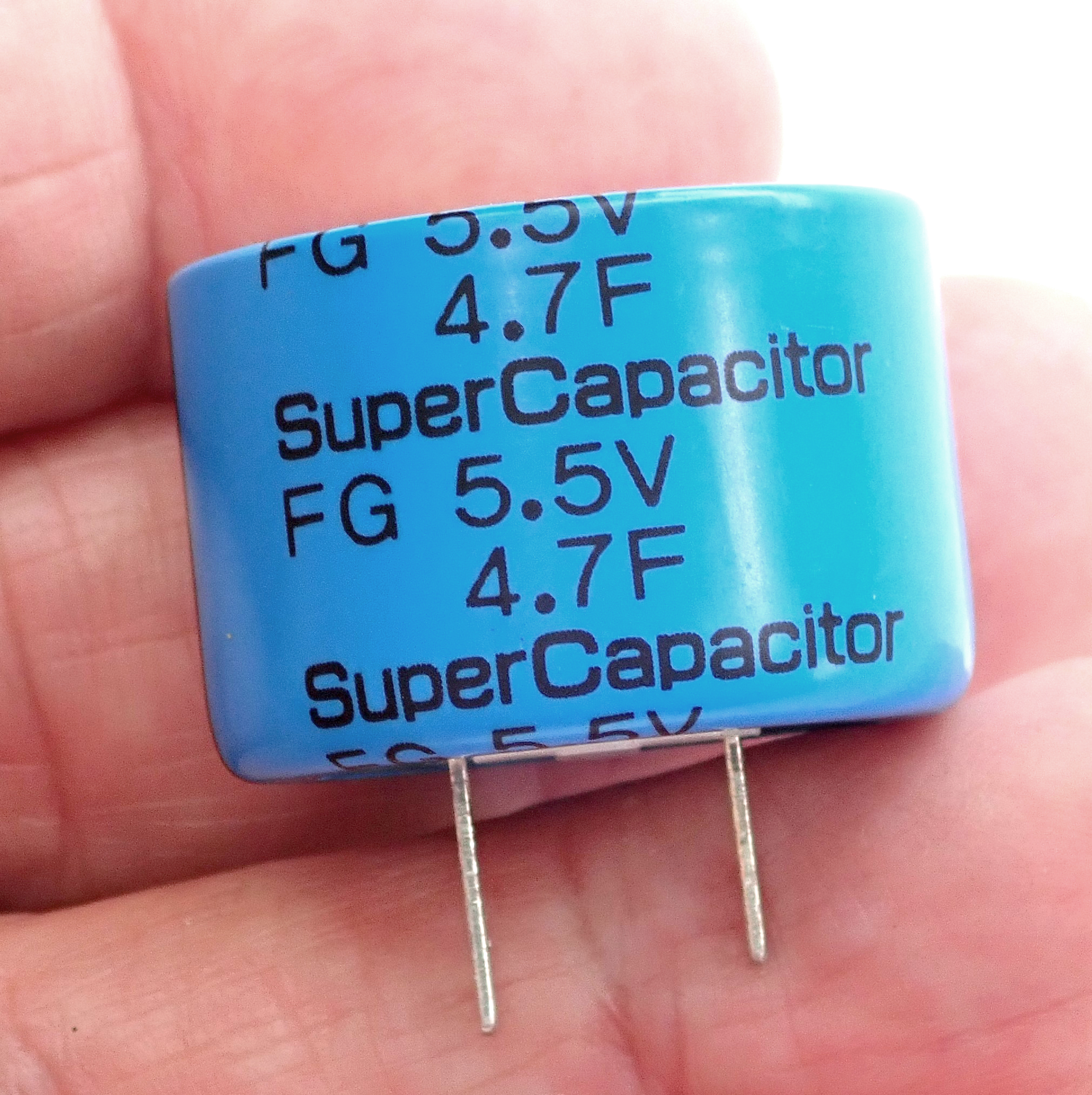
Supercapacitors are among the coolest of so-called passive electronic components. Because they are ultra-high-capacity capacitors, they can function as batteries capable of being very rapidly charged and briefly powering many electronic circuits and even small motors with bursts of power. And they’ll endure many more charge-discharge cycles than conventional rechargeable batteries. They’re great as backup power for equipment during battery replacement, and they’re ideal for providing long-term power for static random-access memory (SRAM).
Rechargeable lithium, lead-acid, and nickel-cadmium cells may require hours to be recharged. But a supercap can be recharged in a few minutes or even seconds.
MAKE A DIY SUPERCAP
While commercial supercapitors are best for DIY projects, you can learn about their performance by making one yourself. A very simple supercap can be made with activated carbon, aluminum foil, and lemon juice.

Figure A
Place the completed supercap in a shallow container with a weight on top to hold it in place. Or secure the layers together with tape, again making sure the opposing foil sides don’t touch. Finally, pour some lemon juice over the supercap to provide an electrolyte.

The DIY supercap should be charged with 1.5 volts or less to avoid decomposing the lemon juice. The one shown in Figure B was charged to 1.31 volts from a single AA cell. Figure 
You can charge a DIY supercap to a higher voltage by stacking multiple layers. In Science and Communication Circuits and Projects, one of my RadioShack Engineer’s Mini-Notebooks, I describe how to make a multi-cell supercap by stacking 5 layers of premade activated carbon sheets purchased at an aquarium store. The sheets are separated by slightly larger sheets of paper towel. Bare, copper-clad PC boards are placed on opposite sides of this 5-layer sandwich, which can be charged to 3 volts or more. This DIY supercap will power a red LED for several minutes or longer.
COMMERCIAL SUPERCAPS
You’ll need to use a commercial supercap for practical applications. Many are available, and their prices have dropped significantly since they were first introduced.
Page 92 shows an NEC supercapacitor that can be charged to 5.5 volts. It has an incredible capacitance of 4.7 farads! This means you can charge this supercap from an active USB port and use it to power many low-power circuits.

Figure C
GOING FURTHER
You can perform many experiments with DIY supercapacitors. Try stacking them to increase their capacity, or substituting the lemon juice with other electrolytes. How does the charge-discharge cycle change when vinegar is substituted? Or when salty water is used?
The electrolyte substrate used here is the filter bag provided with the activated carbon. But you can also use a paper towel or fabric.
Finally, you can experiment with the physical configuration of DIY supercaps. For example, you can roll your sandwich of foil/carbon/foil into a cylinder. Insert the cylinder into a pill bottle and pour in some electrolyte.







